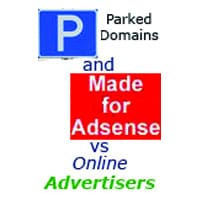[Note: This blog post was updated in March 2021 for enhanced relevance.]
Companies tend to think of LinkedIn primarily as a resource for employee recruitment and professional connections. Although it’s certainly a great place to promote your job offerings, LinkedIn also offers several ad targeting options that make it a diverse and highly valuable platform for general advertising by B2B companies.
Think about it: who better to see your ads than industry professionals with the authority to make purchasing decisions of your products or services for their entire company?
Read on to explore the different ad types and hear our advice on which may be most effective for you.
Related Service: LinkedIn Advertising Management
LinkedIn Ad Format Options
New for 2021: Event Ads
- LinkedIn launched Events (and LinkedIn Live) in 2020
- Creating new ad format (launching Q2 2021) to support this effort
- Will allow for new registration ads, which can utilize lead gen forms to get people signed up for specific events
- More information:
New for 2021: Document Ads
- In H2 2021 LinkedIn will be allowing sponsored Document ads
- This will follow a similar form factor to existing organic post document type, except sponsored
- Not a ton of details available yet, though assumably this will help build out a full funnel approach
- Information from LinkedIn about this organic post type.
Text Ads
These are small text-based ads that appear above or to the right of the main feed. Usually, these ads have the lowest cost per click, and they generally receive the highest number of impressions compared to other formats. The Click-Through Rate (CTR) benchmark is around .01%.
The greatest disadvantage of text ads is that they only display on desktop devices. Given that 57% of LinkedIn users are on mobile devices, this is a significant loss.
Another issue is that due to their size, text ads are easy to tune out—or not see at all.
We don’t typically recommend this option unless it is paired with one of the other options. When an additional ad format is paired with text ads, they can provide additional awareness and recognition, which can increase engagement and conversion rates.
Sponsored Content
These advertisements are more prominent than text ads: they appear in the main feed just like other updates from your network.
Visible to both desktop and mobile users, Sponsored Content ads can include an image, video, or carousel of multiple images. They can even have a lead form attached to the ad, allowing users to automatically submit their LinkedIn contact information directly in the form. Lead forms are pre-filled with information from a user’s LinkedIn profile, lowering the barrier to convert.
Though your Cost Per Click (CPC) may vary, depending on who your targeting, these ads typically have a .45%-1% CTR. If you have valuable content like a whitepaper or eBook and your objective is lead generation, then we typically recommend this ad type.
Sponsored Content ads can lend itself to filling out your full funnel marketing approach: you can offer high-level content like whitepapers and eBooks and then drive people down the funnel to things like case studies and demo requests (assuming you’re B2B), all with the same ad type.
Message Ads (previously called Sponsored InMail)
With Message ads, you can send targeted, personalized content to your specific audience. This option is billed by “Cost Per Send” (CPS), not opens or clicks. It’s around $0.30-$0.60 per send, and the open rate is usually about 40-60%.
In message ads, you can display a targeted message with a single call-to-action button. If you have multiple calls to action you’d like to advertise simultaneously in your message, check out conversion ads below.
Because InMail is accessible both on desktop and mobile, your potential audience is wide. This type of advertising is best suited for sending a targeted invite to an event or following up with contacts and providing a lower funnel offer.
Dynamic Ads
These are similar to text ads in that they are only visible for desktop users—dynamic ads appear on the top or right of the page.
However, there are some additional features that make this format useful.
First, there are three different formats: follower, spotlight, and content. Follower ads seek to expand the reach of your LinkedIn page by increasing your number of followers, spotlight ads feature a prominent call-to-action and send users to your landing page, and content ads allow users to download your content in exchange for their contact information.
Second, dynamic ads can be personalized to the individual user being targeted. If you choose to, you can even incorporate their profile picture and name as part of the ad.
Some features of dynamic ads are not available yet through the self-service platform. For example, you would need a purchase order through LinkedIn to run dynamic content ads.
Video Ads
Video ads are exactly what they sound like—short videos that appear on users’ dashboards and promote a company, product, or website while driving pageviews and conversions. It could be a demo of a product, a preview of an event, or a story about a successful client; the possibilities are only limited by your imagination.
Video advertisements appear on both the mobile and desktop versions of the site and can be targeted at particular groups and users. One tip: as with video ads elsewhere, users will often watch with the sound off. Make sure your message is clear without audio!
Conversation Ads
For a more nuanced approach combining careful targeting with multiple calls to action, try running conversion ads. These ads appear on both the mobile and desktop site and offer a way of targeting only the highest quality leads through a form with qualifying questions. You dictate the messaging, but the audience chooses their pathway through the ad.
You can set up multiple call-to-action buttons that link to your landing pages, open a Lead Gen Form, or drive engagement with more information in the next message. You can also track conversions to build more useful data about user activity.
One thing to keep in mind with this ad type is that folks that opt-in can then engage with your brand via back-and-forth messaging. Depending on the overall volume of engagement, you may need to dedicate a team resource to managing these conversations and keeping a consistent brand presence.
Conclusion
This blog post on the history of LinkedIn ads contains more information that’s helpful to consider if you’re thinking about advertising on LinkedIn.
Just like any other online advertising, results for each of these LinkedIn ad formats will depend on multiple variables, such as your industry and target audience. Make sure to keep these variables in mind and set realistic expectations for your campaign.
Ultimately, the ad type(s) you end up choosing will depend on your primary objective, offer, and line of business. Between Text Ads, Sponsored Content, Message ads, Dynamic ads, Video ads, and Conversion ads, there’s an option suited for most ad campaigns, especially in the B2B space.


